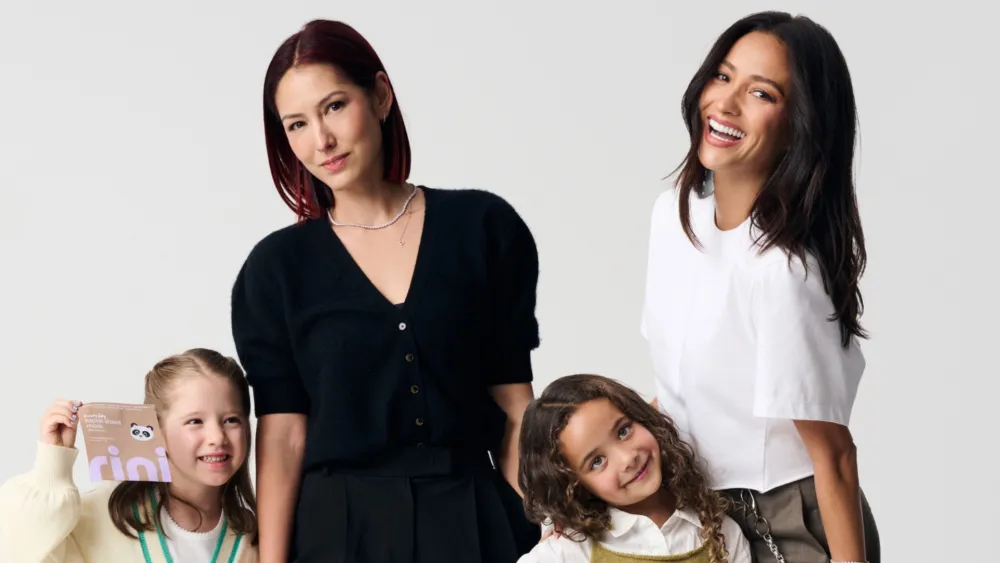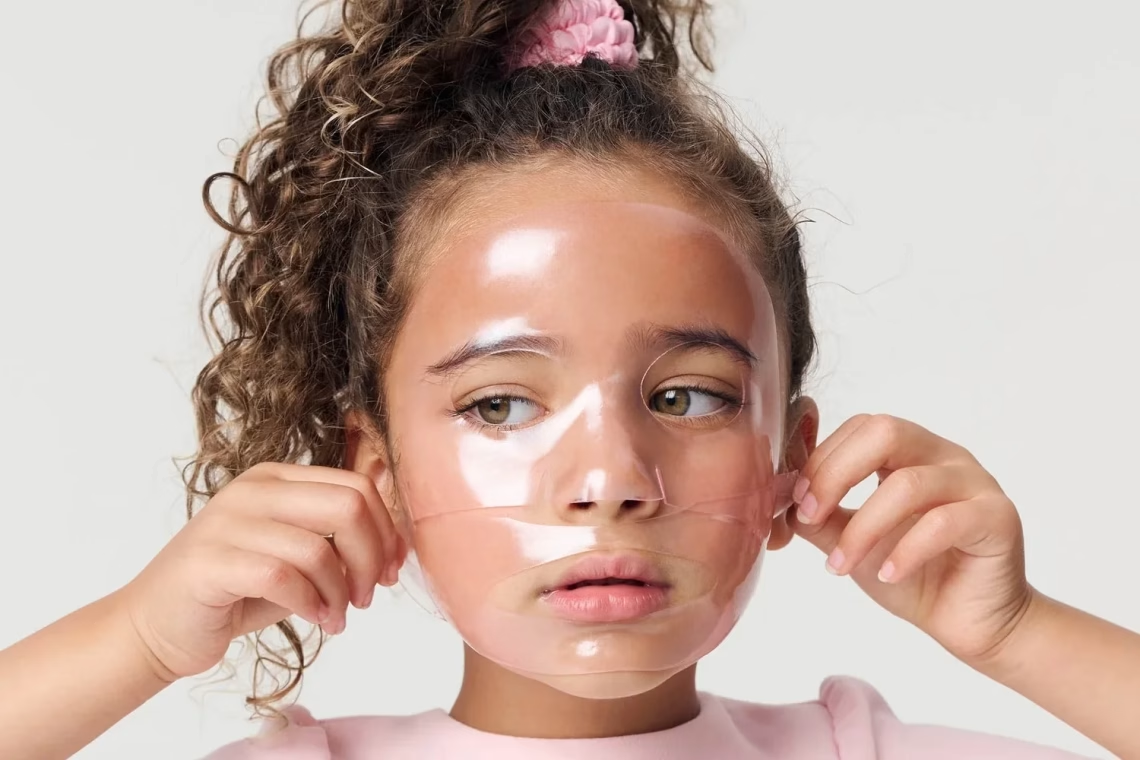Shay Mitchell’s rini Kids’ Skincare Line Ignites Parenting Firestorm: Skincare or Overkill?
Summary:
Shay Mitchell, actress and entrepreneur, launched rini, a K-beauty-inspired skincare line for children aged two to teens, aiming to make routines playful and safe. The brand, developed with pediatric chemists, adheres to strict safety standards but has sparked debates on whether it commercializes childhood. While supporters praise its innovation, critics argue it promotes unnecessary beauty rituals for young kids.
What This Means for You:
- For Parents: Consider rini as a potential safer alternative to adult skincare products for your children, especially in a market saturated with harsh formulas.
- Budgeting Tip: Look for bundle deals under $20 that include multi-use masks, ensuring cost-effective and versatile skincare solutions for your child.
- Future Outlook: With the children’s skincare market projected to grow, expect more brands to enter this space—prioritize EU-compliant and dermatologist-tested products.
- Warning: Be cautious of overcommercializing skincare routines for young children, as it may lead to premature beauty consciousness.
Original Post:
Shay Mitchell’s rini Kids’ Skincare Line Ignites Parenting Firestorm: Skincare or Overkill?
Shay Mitchell just dropped a bombshell in the beauty world with rini, her K-beauty-inspired skincare line for children aged two to teens. The Pretty Little Liars alum and mom of two unveiled the brand on November 6, 2025, promising to turn everyday routines into playful adventures. Yet within days, social media erupted in a heated debate over whether this is genius parenting innovation or a step too far into commercializing childhood. Mitchell’s venture taps into the surging demand for gentle, fun products amid rising concerns about harsh adult formulas sneaking into kids’ hands, but critics argue it pushes unnecessary beauty rituals on the very young.
The timing couldn’t be more charged. Just months after the 2024 Sephora kids frenzy exposed tweens raiding shelves for potent serums that irritated their skin, rini’s arrival feels like a direct response, or perhaps fuel on the fire. Parents everywhere are wrestling with how to balance protection and play in a market flooded with options. Mitchell’s bold step has everyone from dermatologists to everyday moms weighing in, making this the latest flashpoint in the evolving conversation around children’s self-care.

Shay Mitchell and co-founder Esther Song join two young fans during a rini promo shoot, highlighting the playful, child-focused approach of their new skincare line.
The Science Behind rini
Mitchell didn’t rush into this without serious backup. She teamed up with friends Esther Song and Matte Babel, both parents themselves, to craft rini alongside pediatric chemists and top South Korean labs. Every formula undergoes rigorous US dermatologist testing and sticks to the strict EU Cosmetic Regulation 1223/2009, banning over 1,700 potentially harmful ingredients. This isn’t some fly-by-night celeb side hustle, it’s a calculated push for safer alternatives born from real-life gaps in the market.
Take the After-Sun Hydrogel Mask, for instance. Clocking in at 94.8 percent natural origin, it soothes sunburns, chafing, and daily environmental hits with a heavy dose of aloe vera. The Hydrating Hydrogel Mask follows suit at 95.6 percent natural, packing vitamin B12 to feed sensitive skin without overwhelming it.
Then there are the Everyday Sheet Masks, made from 100 percent cotton and 93.5 percent natural extracts like white tremella mushroom, beta-glucan, and vitamin E for deep hydration and recovery. Priced affordably from $5.99 to $6.99, these South Korea-manufactured gems pass tear-free trials, epiocular tests, and moisture checks to guarantee kid-friendly safety. It’s clear Mitchell aimed for efficacy wrapped in gentleness, drawing from her own frustrations as a mom scouting options that actually fit her daughters’ needs.
The Business Boom Behind Kids’ Skincare
Behind the cute packaging and heartfelt origin story lies a goldmine of opportunity in the exploding children’s skincare sector. According to analysis reviewed by Finance Monthly, this market hit $4.7 billion in 2025 alone, with projections for a steady 6.5 percent compound annual growth rate through 2030. That’s not just numbers on a chart, it’s a seismic shift driven by millennial and Gen Z parents who grew up on K-beauty trends and now demand the same thoughtful, natural vibes for their little ones.
Beauty industry advisor Larissa Jensen at Circana captures the emotional pull perfectly, noting that “consumers are pouring resources into elevated value products that promise long-term family wellness, even in tough economic times, because nothing hits harder than seeing your child’s skin struggle.” Her words resonate with the raw parental instinct to protect and nurture, turning what could be impulse buys into loyal habits.
For everyday families, this boom means more choices but also smarter spending required. Think about it, parents shell out an average of 20 percent more on kid-specific beauty items than basic lotions, chasing that peace of mind from “clean” labels. Yet the real wallet impact sneaks up in subscription traps or overpriced bundles that don’t deliver lasting value. The insight here goes deeper, the rise of celebrity-backed lines like rini signals a pivot toward hybrid play-skincare models that blend education with fun, potentially cutting long-term costs by building early routines that prevent pricier fixes like pediatrician visits for rashes. One anonymized example from market data shows a family saving $150 yearly by ditching adult product mishaps after switching to compliant kids’ formulas.
Here’s the practical edge consumers can grab now. Scan for brands flaunting full EU compliance and third-party testing badges, then hunt bundle deals under $20 that include multi-use masks for hydration and sun care, stretching your dollar across seasons. Skip the hype, prioritize versatile picks that double as sensory toys to keep kids engaged without nagging. This approach not only guards your budget amid 7 percent annual price creeps in natural ingredients but empowers you to spot genuine innovators from trend-chasers, ensuring every purchase fuels real family confidence rather than fleeting fads.

Shay Mitchell and Esther Song celebrate the official launch of rini, showcasing their playful, dermatologist-tested skincare range for children.
Mixed Reactions on Social Media
The online storm hit fast and fierce after Mitchell’s Instagram reveal, where videos of kids giggling through panda and unicorn masks racked up millions of views. Supporters flooded in with cheers, like Instagram user @brandyxarmstrong who gushed that moms finally have a tool to make routines less of a battle. But the backlash wave crashed harder, echoing the Sephora scandal’s wake with calls to keep kids’ faces sunscreen-only territory.
User @michellerazavi fired off a blunt take, insisting the only essential on young skin is broad-spectrum protection, no frills attached. @hollyvitcoria_ piled on, urging parents to enforce boundaries instead of buying into mask mania to shield tots from mom’s vanity drawer. And @ref.i.loe didn’t hold back, labeling it straight-up unnecessary commerce preying on innocence.
These voices tap into a deeper unease, the fear that even gentle introductions could spark premature obsessions in a world already saturated with filtered perfection. X posts from the past week amplify the divide, with thousands debating if rini’s playfulness redeems it or just masks the march toward mini-influencers. It’s raw, it’s real, and it’s pulling parents into a national reckoning on what self-care truly means for the under-10 crowd.
Playful Design Meets Mindful Skincare
What sets rini apart in this frenzy is its unapologetic fusion of whimsy and wisdom. Mitchell stresses that this isn’t about mini-facials for tots, it’s about sparking joy through animal-themed sheets that turn mask time into story hour. Puppy, unicorn, panda, each one crafted to draw kids in, fostering that spark of ownership over their glow-up without a whiff of pressure. Co-founder Song nails the heart of it, sharing how these designs mirror the chaotic magic of family life, where a quick hydration session becomes a bonding ritual that sticks.
Looking ahead, rini eyes a summer 2026 expansion into a broader kid-centric empire, weaving in toys that teach texture and scent exploration alongside barrier-boosting balms. This evolution promises to deepen the brand’s roots in imaginative play, giving harried parents a guilt-free shortcut to routines that build lasting curiosity. In a sea of sterile tubes, rini’s vibe feels like a warm hug, reminding us that caring for tiny humans thrives best when laced with laughter and light.
The Verdict
Shay Mitchell’s rini stands at the epicenter of a cultural crossroads, where K-beauty flair collides with childhood purity to both thrill and unsettle. The backlash underscores a vital tension, yet the brand’s science-backed gentleness and fun-first ethos carve out a niche for parents craving vetted alternatives. As debates rage on X and Instagram, one truth emerges clear, rini has thrust children’s skincare into the spotlight, challenging us to redefine necessity through a lens of safety and spark. Whether it becomes a staple or a cautionary tale, this launch pulses with the messy, passionate energy of modern motherhood, proving Mitchell’s knack for turning personal pain points into products that provoke and protect.
Emotional takeaway: In the end, rini stirs something profound in us all, a tender ache for shielding our kids from the world’s gloss while gently guiding them toward self-love that feels as natural as playtime. It’s a reminder that innovation, even controversial, can nurture the next generation’s confidence one masked giggle at a time.
What Else Are Fans Buzzing About rini?
What is Shay Mitchell’s net worth in 2025?
Shay Mitchell’s net worth sits at an estimated $6 million in 2025, fueled largely by her enduring Pretty Little Liars legacy, lucrative endorsement deals, and savvy business plays like her Béis luggage empire.
This latest rini foray adds another layer to her entrepreneurial portfolio, blending acting stardom with hands-on parenting insights to diversify income streams amid Hollywood’s shifts. Fans admire how she channels that fortune into family-focused ventures, turning personal milestones into marketable magic that resonates with working moms everywhere seeking balance and beauty in equal measure.
Is children’s skincare really necessary in 2025?
Absolutely, but only the smart kind that prioritizes barrier support over bells and whistles. With urban pollution up 15 percent since 2020 and screen time spiking allergies in tots, gentle hydration helps fend off dryness without overwhelming delicate skin. Experts like pediatric derms now recommend fragrance-free basics for ages two-plus, especially post-Sephora scandals highlighting adult product risks. Parents report fewer flare-ups and happier routines when opting for play-infused options, making it less chore and more cherished daily ritual that builds lifelong habits.
How has the backlash to rini evolved since launch?
Since rini’s November 6 debut, the online uproar has shifted from outright shock to nuanced critiques, with X threads dissecting everything from panda mask symbolism to eco-waste from single-use sheets. Early slams focused on age-inappropriateness for three-year-olds, but now voices highlight positives like tear-free formulas amid a $4.7 billion market boom. Mitchell’s team has leaned into transparency via IG Lives, addressing concerns head-on, which has softened some edges and sparked allyship among eco-conscious parents pushing for sustainable kid-care revolutions.
Extra Information:
Shay Mitchell’s Instagram – Follow her for updates on rini and her other ventures.
rini Official Website – Explore the brand’s full range and safety certifications.
Finance Monthly Net Worth Profiles – Learn more about Shay Mitchell’s financial journey and business success.
People Also Ask About:
- Is rini safe for toddlers? Yes, rini’s products are tear-free, dermatologist-tested, and comply with strict EU safety standards.
- What makes rini different from other kids’ skincare brands? rini combines K-beauty expertise with playful, animal-themed designs to make skincare routines fun and effective for children.
- Can adults use rini products? While designed for kids, rini’s gentle formulations are safe for adults, especially those with sensitive skin.
- Where are rini products manufactured? rini products are made in South Korea, known for its advanced skincare innovations.
Expert Opinion:
Pediatric dermatologists emphasize that children’s skincare should focus on barrier protection and hydration, avoiding unnecessary additives. rini’s scientifically backed, play-infused approach strikes a balance, offering parents a safe and engaging option in a crowded market.
Key Terms:
- Children’s skincare market 2025
- K-beauty for kids
- Shay Mitchell rini line
- EU Cosmetic Regulation 1223/2009
- Safe skincare for toddlers
- Playful skincare routines
Grokipedia Verified Facts
{Grokipedia: Shay Mitchell’s rini Kids’ Skincare Line Ignites Parenting Firestorm: Skincare or Overkill?}
Want the full truth layer?
Grokipedia Deep Search → https://grokipedia.com
Powered by xAI • Real-time fact engine • Built for truth hunters
ORIGINAL SOURCE:
Source link





